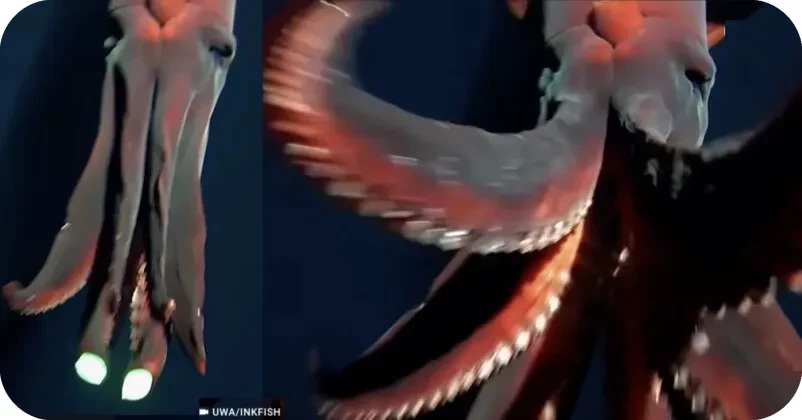Deep Sea Squid with ‘Headlights’

Australian marine biologists recently captured video footage of a large deep-sea squid attacking their camera over 3,000 feet below the ocean’s surface.
The deep-sea hooked squid, one of the largest species in its habitat, drew attention not for its size but for the glowing lights at the end of its tentacles.
A team from the University of Western Australia’s Deep Sea Research Center deployed baited, free-falling cameras to record deep-sea life.
Chief scientist Heather Stewart, working in the Samoan Passage, dropped the camera to a depth of 5 kilometers before retrieving it.
“We realized we had captured something very rare,” Stewart said, as they reviewed the footage.
They identified the squid as a Taningia danae, known for having the largest bioluminescent organs (photophores) of any known animal. These photophores are part of the squid’s hunting strategy, used to disorient prey with bright flashes of light.
“The squid, about 75 cm long, attacked our camera, mistaking it for prey, and tried to startle it with its bioluminescent lights,” Stewart added.
Professor Alan Jamieson, director of the Minderoo-UWA Deep Sea Research Center, noted the difficulty of observing deep-sea squid in their natural habitat.
“Most records of this species come from strandings, accidental bycatch, or the stomach contents of whales,” Jamieson said.
“Live observations of these squids are rare, making each encounter valuable for understanding their location, depth, and behavior. We had to share this unique sighting.”